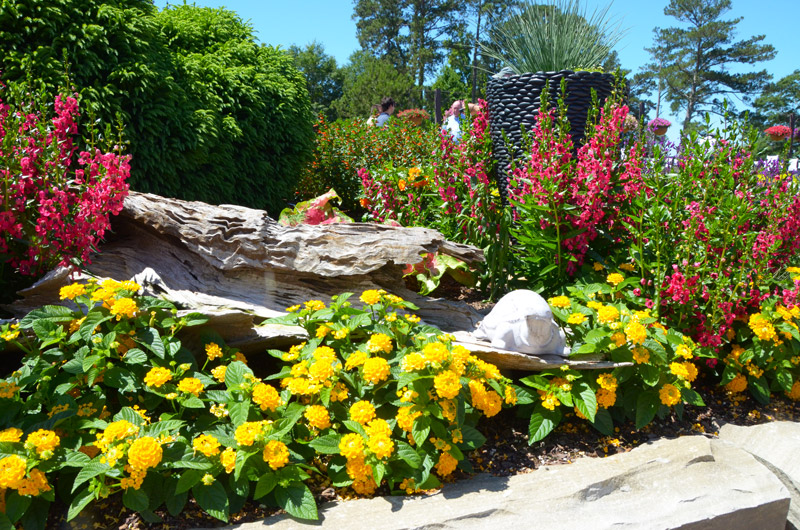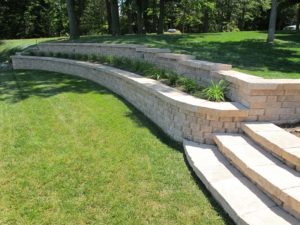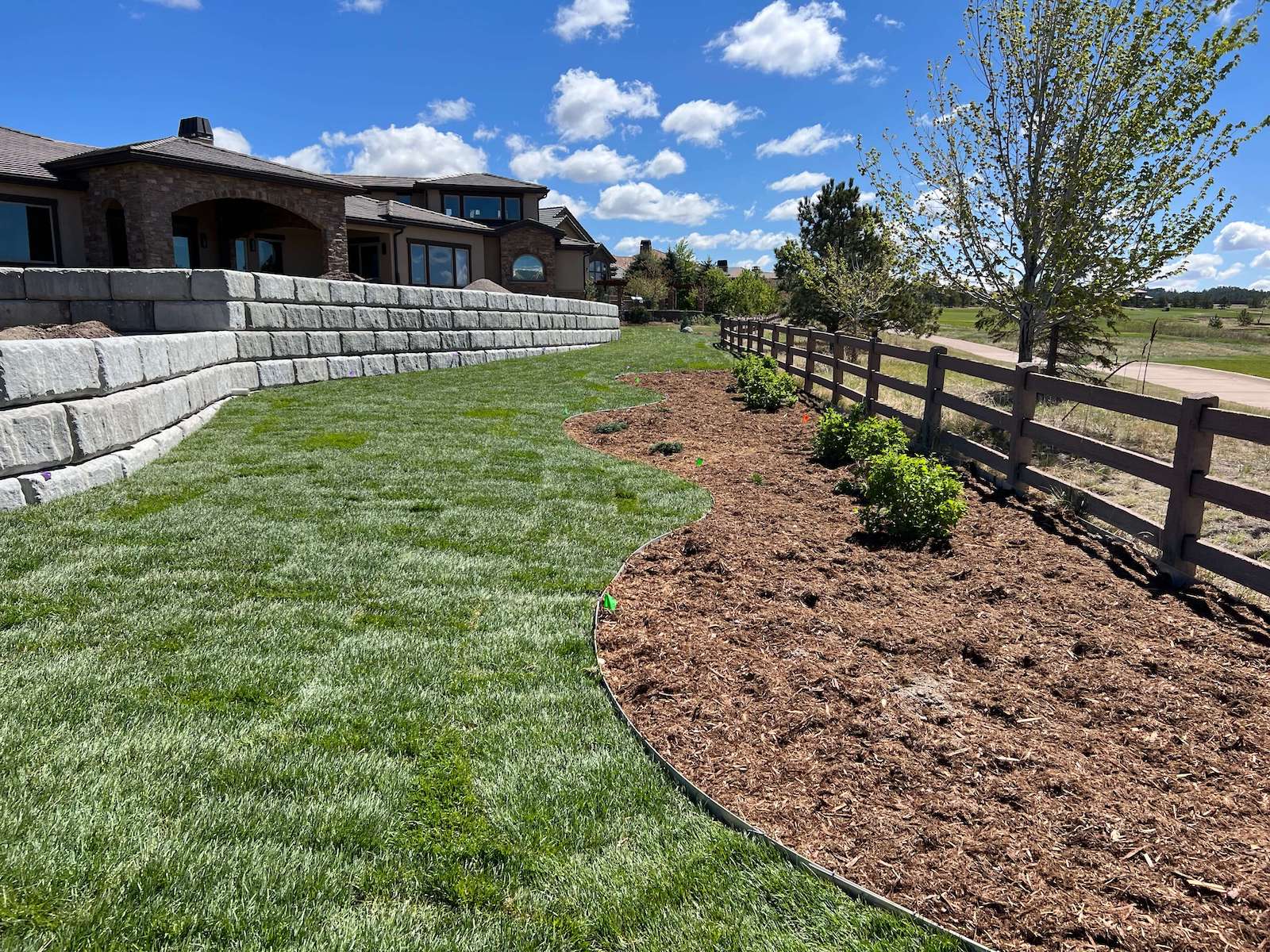The Ultimate Guide To Hilton Head Landscapes
The Ultimate Guide To Hilton Head Landscapes
Blog Article
The Basic Principles Of Hilton Head Landscapes
Table of ContentsFascination About Hilton Head LandscapesSome Of Hilton Head Landscapes9 Easy Facts About Hilton Head Landscapes ExplainedThe Ultimate Guide To Hilton Head LandscapesGetting My Hilton Head Landscapes To WorkAn Unbiased View of Hilton Head LandscapesHilton Head Landscapes - TruthsHilton Head Landscapes for Beginners
Form compatibility is likewise a significant part of unity in designone or 2 noticeably different forms benefit contrast and focus, yet generally all various other types must have some resemblances for a merged look. Texture describes just how coarse or great the surface of the plant or hardscape material feels and/or looks.
Examples of plants with rugged appearance consist of philodendrons, agaves, bromeliads, hollies, hands, and hydrangeas. Features that create great structure include little foliage; slim, strappy fallen leaves (lawns) or tall, slim stems; small, thick branches and tiny branches; long stems (creeping plants); and tiny, delicate flowers.
The Basic Principles Of Hilton Head Landscapes
Most plants are medium structure, because they can not be referred to as having either coarse or fine structure. They are identified by medium-sized fallen leaves with easy forms and smooth sides. The average-sized branches are not largely spaced neither commonly spaced, and the total kind is normally rounded or mounding. Medium-textured plants serve as a background to web link and link the rugged- and fine-textured plants.

To make a room feel smaller, position the rugged textures along the external border and the great textures closest to the audience. The detail of the rugged texture makes the plants show up closer and makes the area really feel smaller. The perceived structure of plants can additionally change with the distance from the plant.
Hilton Head Landscapes Can Be Fun For Anyone
Strong colors raise the comparison and make the appearance appear coarser, while soft shades can flatten texture. Hardscape with a rugged texturesuch as very rough rocks and bold, huge timberstends to make all plant material appear extra moderate distinctive. Developers often develop a texture research (Number 8) theoretically to help make a decision the arrangement of plant products.
Shade in plant product and hardscape adds passion and selection to the landscape. Shade is the most noticeable aspect in the landscape and is usually the emphasis of a lot of home owners; nevertheless, it is likewise the most short-lived component, typically lasting just a couple of weeks a year for private plants.
The Ultimate Guide To Hilton Head Landscapes
A simple summary of the color wheel includes the three primary colors of red, blue, and yellow; the three secondary colors (a mix of 2 primaries) of environment-friendly, orange, and violet; and 6 tertiary colors (a mix of one surrounding primary and secondary shade), such as red-orange. Color theory clarifies the partnership of shades to every various other and exactly how they must be made use of in a structure.

Similar (occasionally called harmonious) color pattern are any type of 3 to 5 colors that are adjacent on the color wheel, such as red, red-orange, orange, yellow-orange, and yellow, or blue, blue-violet, and violet (Landscaping bluffton sc). The colors relate to every other since they typically include two main shades mixed to develop a secondary and 2 tertiary shades, which indicates they share typical residential properties
They often tend to have high comparison in between them. The most typical collections are violet and yellow, red and eco-friendly, and blue and orange. Corresponding shades are usually found naturally in flowers; an usual pair is yellow and violet. Shade is discovered in the flowers, foliage, bark, and fruit of plants.
Little Known Facts About Hilton Head Landscapes.
Green vegetation in all its various tones is the leading shade by quantity, but other shades record interest quicker because of their high contrast to the shade eco-friendly. Color is likewise discovered in structures, rocks, pavers, timber, and furnishings. Most colors in all-natural products, such as stone and timber, are usually low-key and have a tendency to be variants of brown, tan, and light yellow.
Colors have buildings that can influence emotions, spatial understanding, light quality, balance, and emphasis. Cool colors tend to be calming and need to be made use of in locations for relaxation and peacefulness.
Some Known Questions About Hilton Head Landscapes.
Awesome colors tend to decline and are perceived as being farther away, making a room feel bigger. Shade can additionally be made use of to catch attention and straight sights.
Bright yellow, which has the highest strength, also has a high contrast with all various other colors (frequently explained as a "pop" of shade) and ought to be used sparingly. A small quantity of intense shade has as much aesthetic weight as a huge amount of an extra restrained or weak shade.
Analogous (occasionally called unified) color design are any type of 3 to five colors that are surrounding on the shade wheel, such as red, red-orange, orange, yellow-orange, and yellow, or blue, blue-violet, and violet. The shades belong to each various other since they typically consist of 2 primaries blended to develop a second and two tertiary colors, which suggests they share typical residential properties.
Getting My Hilton Head Landscapes To Work
They tend to have high contrast between them. One of the most typical sets are violet and yellow, red and eco-friendly, and blue and orange. Complementary colors are typically discovered normally in blossoms; a common pair is yellow and violet. Shade is discovered in the blossoms, foliage, bark, and fruit of plants.
Green foliage in all its different tones is the leading shade by quantity, however various other colors catch interest quicker since of their high comparison to the shade green - Landscapers near me - https://padlet.com/stevenagonzales/my-delightful-padlet-65fq7sgb974pr3v2. Shade is also found in structures, rocks, pavers, wood, and furnishings. The majority of shades in all-natural products, such as rock and timber, are normally muted and often tend to be variations of brownish, tan, and pale yellow
Get This Report on Hilton Head Landscapes
Shade is a crucial element for creating rate of interest and selection in the landscape. Shades have buildings that can impact emotions, spatial perception, light quality, balance, and focus. One home of shade is defined loved one to temperaturecolors appear to be trendy or cozy and can influence feelings or feelings. Awesome shades often tend to be soothing and must be used in areas for relaxation and calmness.
The "temperature" of colors can also influence the perception of range. Amazing colors have a tendency to recede and are viewed as being farther away, making a room really feel larger. Cozy shades tend to breakthrough and are he said viewed as being better, making an area feel smaller sized. Shade can also be used to catch attention and direct views.
Intense yellow, which has the highest possible intensity, additionally has a high contrast with all other colors (frequently described as a "pop" of shade) and must be used moderately. A small quantity of extreme shade has as much visual weight as a big quantity of an extra restrained or weaker color.
Report this page